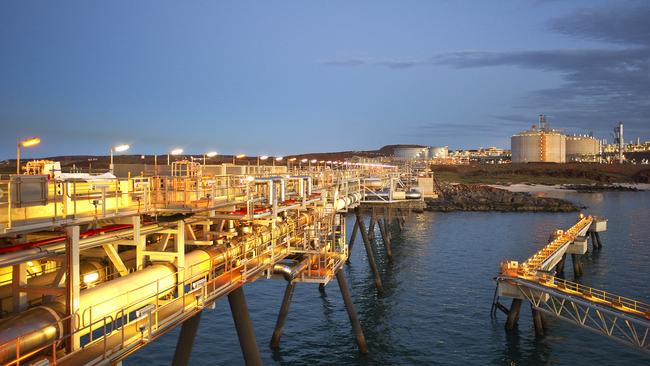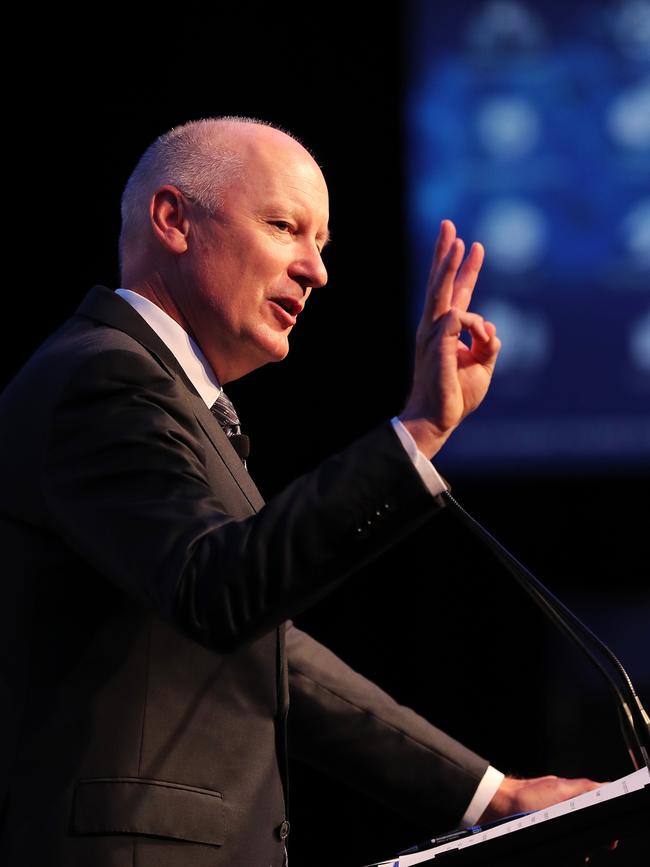Mega-era done but value persists
West Australia’s LNG mega-project era might be over, but plenty of value remains in the wings to be unlocked with Woodside Petroleum’s $16bn Scarborough project at the top of the list.

West Australia’s LNG mega-project era might be over, but plenty of value remains in the wings to be unlocked with Woodside Petroleum’s $16bn Scarborough project at the top of the list.
Woodside chairman Richard Goyder told the company’s annual general meeting he was very certain of one thing: whoever takes the vacant chief executive job “will be living with Scarborough for a very long time”.
It seemed an indication the board viewed the sanctioning of the $16bn project – Australia’s only proposed addition to its LNG export capacity – as non-negotiable. After multiple delays, a final investment decision is due in the second half of the year.
Australia has 87.6 million tonnes per annum of export capacity but as yet has not exported more than 81 million tonnes, which is still a global record. It has a price tag to match, at $52bn, with two-thirds of that from WA.
What the International Gas Union called the “great LNG build-out” ended two years ago, and Chevron’s Gorgon and Wheatstone facilities are online, Woodside’s one-train Pluto has been exporting for several years, and offshore Shell’s Prelude vessel is up and running despite major teething issues.
At this point it looks as though the days of the LNG mega-project are over and in its place comes backfill, onshore gas in two basins and an offshore oil project with Australia holding an “aspirational” 50 million tonnes of capacity to develop.
The situation among two of Australia’s competitors is somewhat different.
Last year the US cemented its place as the world’s third largest export market with 69 million tonnes of capacity and 20 million tonnes of that added in 2020.
Qatar sanctioned a 32 million-tonne extension to its huge North Field development this February, with annual capacity up to 110 million tonnes when built by the middle of this decade. A further expansion will ultimately take that to 126 million tonnes.
Australia also faces a battle to keep its existing LNG trains full to capacity.

The country’s largest and oldest LNG export facility – the North West Shelf – whose first export “trains” were built 50 years ago, faces gas shortages as soon as 2024.
Last year, operator Woodside signed on for two sections of other resource owner’s gas, for third-party processing at the Shelf which it operates and is jointly owned by six different groups.
It will take gas from Woodside’s Pluto plant and from Beach Energy and Mitsui’s shared Waitsia field in the onshore Perth Basin.
“These agreements are significant steps. They demonstrate that the North West Shelf partners are willing and capable of reaching deals with third parties, and with participants from within the joint venture itself, to secure future supply,” Wood Mackenzie analyst Shaun Brady said.
That ignores discussions so heated that executives from different companies reportedly slammed phones down, and delays that forced WA Premier Mark McGowan to publicly declare in 2019 he wanted to see the project move forward.
The large, high CO2 Browse fields – 900km from shore – which have seen a series of development concepts since their discovery many decades ago, are large enough to keep the facility running to 2070.
Its latest development iteration has seen sanctioning delayed at least three times. Now, a decision won’t be considered until 2023.
The 4600 jobs promised by Woodside as part of the wider Pluto-Shelf Burrup Hub concept may not materialise, and demand dynamics may be very different by the time it needs to start contracting gas via long-term agreements.
Stakeholders will also have to deal with investor concern over its high CO2 content and resulting footprint.
Other projects, from a failed exploration well by BP to a development-ready gas project without a home, are also unlikely candidates now to keep the historic facility alive in the longer term.
Browse could still have a future but not at the processing facility 900km away.
“Browse could end up being developed via Ichthys later this decade, as that plant could require backfill sooner than some think,” Credit Suisse analyst Saul Kavonic said.
Consultant Simon Molyneux does not see other candidates for the facility.
“The NWS is, relative to the other plants, old and inefficient,” he said. “There is a limited economic case and no environmental case for keeping it open. The only option is if Chevron could be persuaded to free up some of its own warehoused gas.”
At one point the US supermajor was hoping its own Clio and Acme fields could have done the job. That is unlikely now, given it is trying to sell its one-sixth stake in the Shelf.
The excitement in WA right now appears to be further south in the onshore Perth Basin, where deeper drill campaigns have unlocked new sources of gas. Apart from Beach Energy, Strike Energy has had luck with the same formation and plans to develop a urea plant and use geothermal energy as a power source.
The recent discoveries have kickstarted a previously stolid local industry, but one where gas could ultimately be used for hydrogen, fertiliser or other goods, rather than for power or as an export product.
Santos, meanwhile, will sanction the Dorado oil project it shares with junior partner Carnarvon Petroleum next year, after drilling two additional appraisal wells this year.
The project will produce 75,000 to 100,000 barrels of oil per day and is the third-largest discovery in the history of the area.
-
Helen Clark is chief editor of Energy News Bulletin, a twice-daily news service for Australia’s energy industry.


